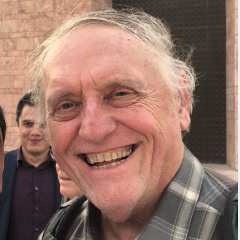You are not currently logged in. Please create an account or log in to view the full course.
Isomers
- About
- Transcript
- Cite
Optical Isomerism
In this course, Professor David Bergbreiter (Texas A&M) introduces us to the concept of optical isomerism, the idea that certain molecules have mirror images of themselves which are non-superimposable, giving rise to a completely new set of properties. We begin by: (i) first looking at the concept of isomers, where optical isomers can be found and an initial concept of non-superimposability, then; (ii) talking about where optical isomers (or enantiomers) can be found in medicine and introducing optical activity; (iii) and then moving on to develop the idea of optical activity, and how we use that to name and identify different enantiomers, using various different examples; (iv) then briefly touching on other nomenclature and representations; (v) and finally using this new nomenclature we have learned on a more advanced level with real molecule.
Isomers
In this first mini-lecture, Professor Bergbreiter first introduces the idea of isomerism: the different kinds of isomerism we can get and where optical isomers fit in the family. This special kind of isomer has a unique trait: that their mirror images are non-superimposable. We learn the definition of this term in the context of chemistry but also look at some real-world examples of where we can see this. Then returning to chemistry, we start to learn how non-superimposability of mirror images can give them different biological functions.
Cite this Lecture
APA style
Bergbreiter, D. (2022, January 18). Optical Isomerism - Isomers [Video]. MASSOLIT. https://massolit.io/courses/optical-isomerism/isomers
MLA style
Bergbreiter, D. "Optical Isomerism – Isomers." MASSOLIT, uploaded by MASSOLIT, 18 Jan 2022, https://massolit.io/courses/optical-isomerism/isomers

